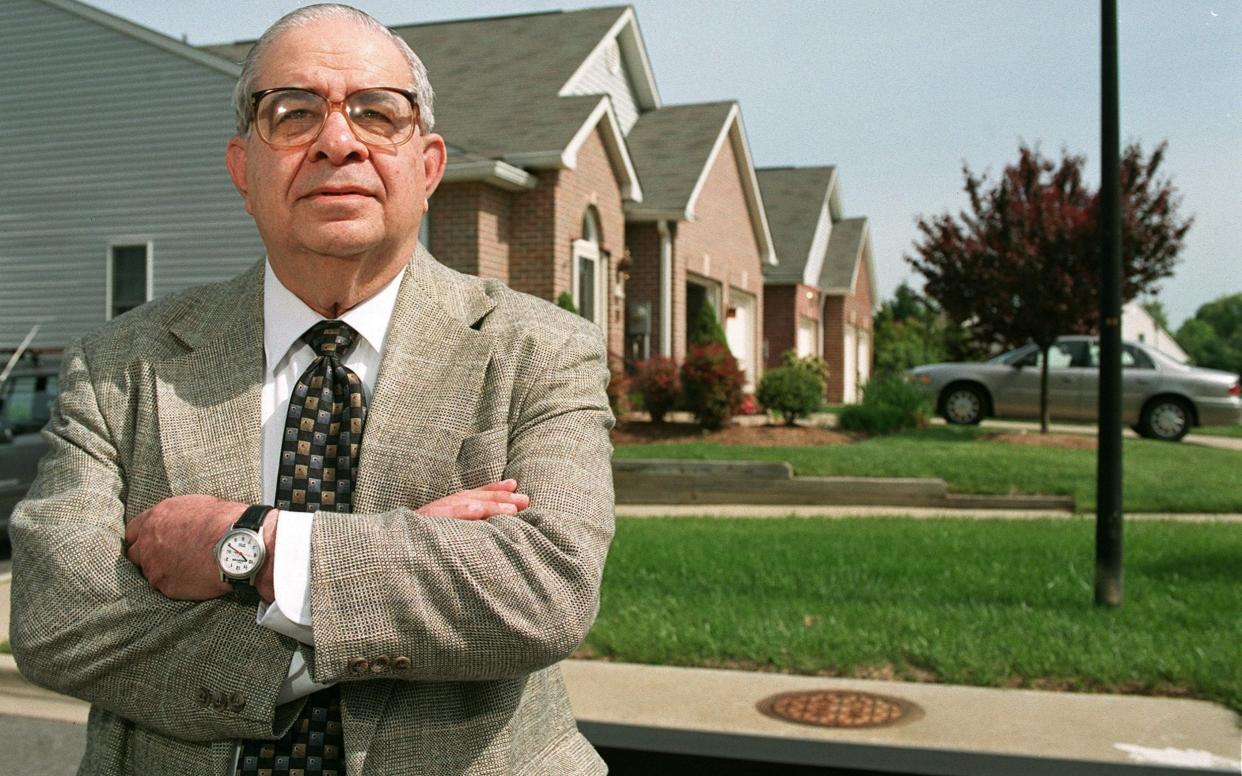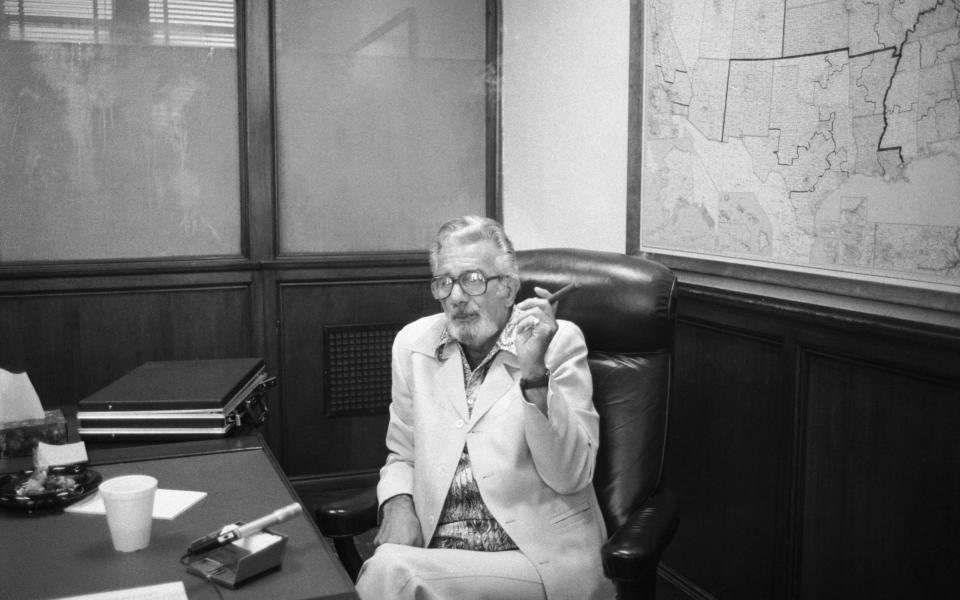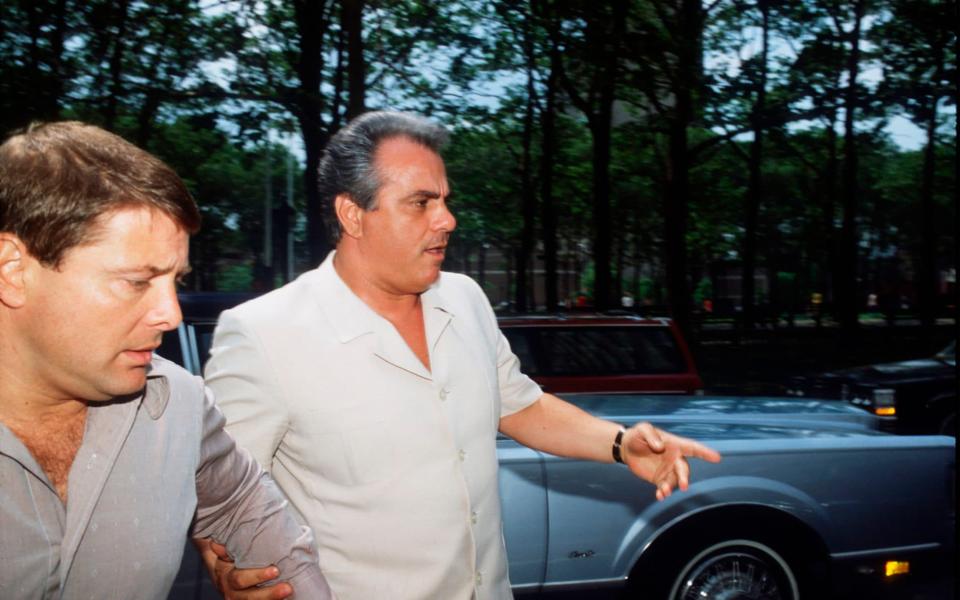Gerald Shur, founder and head of the US Witness Protection Program – obituary

Gerald Shur, who has died aged 86, was a federal lawyer who created the US government’s Witness Protection Programme; he was involved in every major mob trial of the 1970s and 1980s, helping to secure the testimony of big city gangsters such as “Sammy the Bull” and “Jimmy the Weasel” and providing them with new lives in middle America; later he pursued Mexican drug lords as well as Islamic terrorists.
During his 34-year career at the US Department of Justice, Shur was responsible for protecting some 6,416 witnesses and 1,468 dependants, including wives and mistresses. Often this meant sorting out their messy personal lives.

“At various times, he served as mob marriage counsellor, substitute father, even priest,” explained Pete Earley, who wrote a book about the programme with Shur. “He helped create false backgrounds for witnesses, arranged secret weddings, oversaw funerals and personally persuaded corporate executives to hire former mob hitmen as delivery route drivers.”
Shur even once arranged for the wife of a Los Angeles killer to have breast augmentation surgery to keep her husband happy.
At one point Shur enrolled in the programme himself, after a Colombian hitman was intercepted at the US border with apparent orders to kidnap Shur and torture him into revealing the whereabouts of a hidden witness.
He spent months holed up in a hotel with his wife, who was told not to open the door unless Shur gave a special knock confirming that no one was holding a gun to his back: two big bangs followed by three quick raps. Eventually Shur decided to confront his pursuer and strode into his jail cell, only to discover that the real target was someone else.
Gerald Shur was born on October 18 1933 in New York to a Jewish family of Eastern European stock. His mother, Rose, was a secretary. His father, Abraham, was in the dressmaking business and often had to deal with mob racketeers in the course of his work, several of whom attended Shur’s bar mitzvah.
From a young age Gerald was fascinated by organised crime; when his parents encouraged him to keep a scrapbook, he stuffed it with clippings about cases.
He spent his summers working in a clothes factory before attending the University of Texas at Austin, obtaining a degree in Business Administration in 1955 and a Law degree two years later.
His time at university coincided with a two-year-long senate investigation into organised crime, revealed that the Mafia had corrupted every major American city. Shur found he was going to the university library not to study, but to read everything he could about the mob.
He and his wife Miriam married two months after they met on campus aged 17.
After graduating, Shur set up a private practice in Corpus Christi, Texas. His first client was a thief who had burgled a clothes shop and wore several items he had stolen to the trial. He was found guilty.
Shur was soon making a decent living, but grew restless as a small-town lawyer. After reading of the attorney-general Robert Kennedy’s declaration of war against organised crime, he flew to Washington to ask for a job and was handed the task of co-ordinating mob cases in New York.
In 1966 he was diagnosed with multiple sclerosis, which often left him in so much pain he could barely stand. He hid these attacks from colleagues because he did not want their pity, and later in life gave talks to fellow sufferers about living with the illness.
One of his first assignments was babysitting Joseph Valachi, who in 1963 became the first gangster to break the Mafia’s code of silence, omertà, by revealing the identities of 317 mob members. Shur spent hours interviewing Valachi about Mafia networks, at one point bringing him several exotic cheeses as a gift. In return Valachi gave Shur a recipe for spaghetti sauce that became popular with his justice department colleagues.
“Those sessions were literally magical for me, because of my lifelong interest in organised crime,” Shur said.
At that time, police informants kept turning up dead. One was disembowelled to send a warning to any member of the Mafia who would be tempted to spill their guts to the feds; another who had worn a wire for the FBI had wires jammed into his ears.
Shur became convinced that the only way to defeat the Mafia was to provide better protection. He started offering ad hoc support to witnesses, giving them small amounts of money and helping them to move cities. A friend of his wife’s, a local head teacher, forged school records for witnesses’ children.
“Here I was, on the prosecution team, paying their living expenses and helping them go into hiding,” he recalled. “It wasn’t going to be long before a shrewd defence attorney accused me of buying testimony, which is illegal.”
The Witness Protection Program officially started in 1971. Shur initially predicted that 10 or so witnesses a year would enrol; by 1974 the number was 400 a year. Each was given a new name, new social security number, and enough money for three months.
After that, they were expected to become self-sufficient. On occasion Shur would accompany them to job interviews. When asked if his witnesses had any particular skills, he responded: “Well, they can kill, steal, embezzle and sell drugs.”
The first witness to enter the scheme was Vincent “Fat Vinnie” Teresa, a loan shark who weighed more than 20 stone.
He had previously run a company called Piranha Inc, so-called because he kept a tank of piranhas on his desk into which he shoved the hands of late-paying clients. Marshals protecting him foiled a plan to drop sticks of dynamite down a courthouse chimney while he was testifying and he eventually helped convict more than 50 gangsters.
Others followed suit, including Sammy “The Bull” Gravano, a hitman guilty of 19 murders whose testimony led to the conviction of the crime boss John Gotti, known as the “Teflon Don” after his acquittal in three previous trials.

“Fat Vinnie” Teresa had only had one job before embarking on a life of crime – driving his uncle’s grocery truck, which he had hijacked. After he had testified, Shur bought him a fish shop in a small seaside town. However, Teresa soon started terrorising the other fishmongers in the area, smashing their windows and intimidating their suppliers. Eventually he landed himself back in jail for trafficking hundreds of exotic birds and reptiles to sell as pets, most of them endangered.
Such mishaps were common. One witness was resettled in England after admitting to laundering $50 million in stolen securities for the mob.
He used his new identity to buy a stake in a failing British bank and subsequently defrauded depositors of $2 million. Another ran for mayor of his new town. Shur got a late-night call from one witness, whose new neighbour was pointing a gun at him after he was caught spying on the man’s naked wife through a window.
When one participant killed his girlfriend and went on a robbing spree that left six people dead, the programme came under heavy public scrutiny. Media reports painted a picture of ruthless killers thrust into the midst of sleepy suburban towns. Congress reformed the scheme in 1984, placing tighter restrictions on who could join.
Yet Shur often pointed out that the recidivism rate of the witnesses was much lower than that of inmates leaving prison. By the time he retired, the programme had put 10,000 gangsters behind bars and helped to break the mob’s grip on America’s cities.
Throughout his career, Gerald Shur would say that his concern was for the well-being of innocent family members whose lives had been uprooted.
“I worried about what we were doing to them,” he said “Their wives, children, parents and other relatives all suffered. Being relocated is always a painful event.”
He is survived by his two children, Ronald and Ilene.
Gerald Shur, born October 18 1933, died August 25 2020


